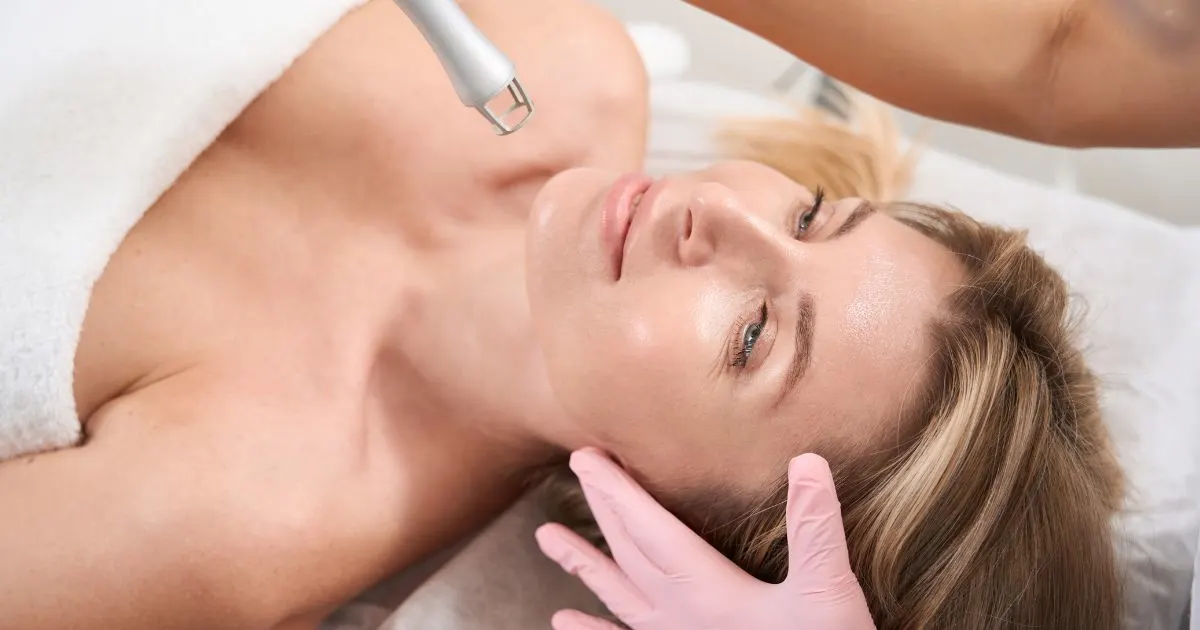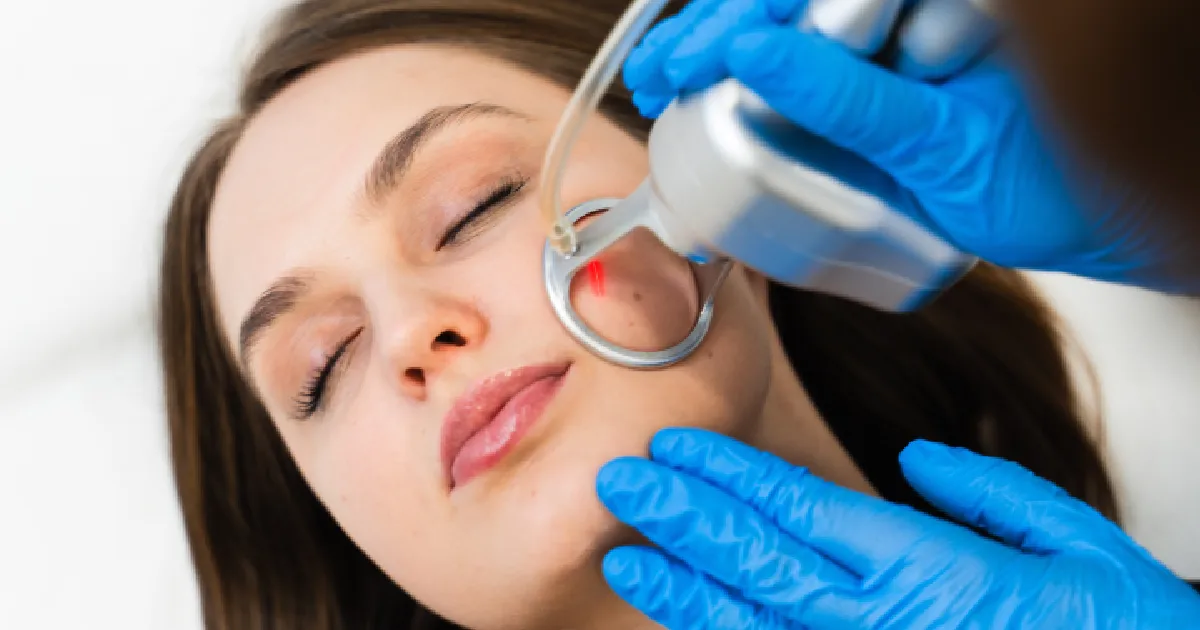Table of Contents
Sun damage, acne scars, fine lines, and hyperpigmentation are common skin concerns that can affect anyone. Thankfully, facial resurfacing offers a way to rejuvenate and refresh your skin, revealing a more youthful and radiant complexion.
But here’s the catch—not all skin is the same. The right resurfacing treatment for you depends on your skin type, concerns, and tone. In this guide, we’ll break down skin resurfacing treatments, explain how they work, and help you understand which options might be best suited for your unique skin. If you’re considering facial resurfacing in Pace, FL, Skin & Tonic offers state-of-the-art treatments with the Aerolase ERA and Phoenix CO2 lasers, designed to provide customized results.
What is Facial Resurfacing?
Facial resurfacing is a broad term for treatments that improve skin texture, tone, and overall health by removing damaged outer layers of skin. The process encourages collagen production, which helps create firmer, smoother, and younger-looking skin over time.
There are several types of non-invasive skin resurfacing treatments available, including laser resurfacing, chemical peels, and microdermabrasion. Each works differently but shares a common goal: to enhance your skin’s appearance by reducing imperfections and promoting healing.
At Skin & Tonic, we use Aerolase ERA and Phoenix CO2 lasers, which deliver controlled energy into the skin, creating microscopic holes that trigger the body’s natural healing response. This improves concerns like:
- Wrinkles and fine lines
- Uneven tone and texture
- Sun damage and age spots
- Large pores
- Freckles and scars
- Skin tags and lesions
Now, let’s explore how laser resurfacing for different skin tones works and what you should consider when choosing the right treatment.
Laser Resurfacing for Different Skin Tones
One of the biggest misconceptions about facial resurfacing is that it’s only suitable for lighter skin tones. While some older laser treatments pose risks for individuals with darker complexions, modern advancements in laser technology have made resurfacing safer and more effective for all skin types.
The key to safe and successful resurfacing lies in customizing resurfacing treatments for your skin. Here’s how different skin tones respond to resurfacing and which options work best:
Fair to Light Skin Tones
People with fair to light skin (Fitzpatrick Types I-II) typically tolerate ablative and non-ablative laser resurfacing well. These treatments help reduce fine lines, wrinkles, sun damage, and textural irregularities.
- Best options: CO2 laser, Erbium laser (like Aerolase ERA)
- Common concerns treated: Sunspots, wrinkles, fine lines, freckles, and mild scarring
Medium Skin Tones
Medium skin tones (Fitzpatrick Types III-IV) require careful laser selection to minimize the risk of hyperpigmentation and uneven healing. Erbium lasers, which remove skin more gently than traditional CO2 lasers, are a great option.
- Best options: Erbium laser (Aerolase ERA), fractional CO2 laser
- Common concerns treated: Acne scars, uneven skin tone, sun damage, and mild wrinkles
Darker Skin Tones
Darker skin tones (Fitzpatrick Types V-VI) have more melanin, which means they can be more prone to hyperpigmentation and scarring if the wrong laser is used. Non-ablative lasers that heat the skin without removing layers are ideal.
- Best options: Aerolase ERA (Erbium laser with precise settings)
- Common concerns treated: Post-inflammatory hyperpigmentation, large pores, mild scarring, and textural concerns
By choosing a clinic that specializes in customizing resurfacing treatments for your skin, you can achieve smoother, more even-toned skin while minimizing risks.
Hyperpigmentation and Facial Resurfacing
Hyperpigmentation—those stubborn dark spots and patches—can be frustrating to deal with. Whether it’s caused by sun exposure, acne, or hormonal changes, Facial Resurfacing in Pace, FL can help break up excess pigment and even out your complexion.
How does resurfacing help?
Exfoliation: Removes the outermost layer of skin, reducing pigmented cells
Collagen Stimulation: Encourages new skin cell growth, which helps fade discoloration
Heat Technology: Breaks up melanin clusters, leading to a more even tone.
At Skin & Tonic, we use Aerolase technology, which allows for precise heat penetration at controlled depths. This makes it an excellent choice for treating hyperpigmentation in all skin tones without excessive irritation or downtime.
Non-Invasive Skin Resurfacing Options
For those who want visible skin improvements without significant downtime, non-invasive skin resurfacing treatments are a great choice. These methods improve skin texture, reduce pore size, and promote a youthful glow without requiring extended healing periods.
Chemical Peels
Chemical peels use a gentle acid solution to exfoliate the skin and encourage new cell turnover. Light peels are great for brightening the skin, while deeper peels address scars, wrinkles, and hyperpigmentation.
Microdermabrasion
This treatment uses tiny crystals or a diamond-tipped device to exfoliate the skin, improving tone and texture physically. It’s an excellent option for those looking for a quick refresh with minimal downtime.
Aerolase ERA Laser
Unlike traditional lasers, Aerolase ERA delivers high fluence in a collimated beam, making it one of the safest and most effective non-invasive resurfacing treatments available. It improves fine lines, pigmentation, pores, and overall skin texture with a controlled healing process.
What to Expect During a Facial Resurfacing Treatment
Before your facial resurfacing in Pace, FL, you’ll have a consultation at Skin & Tonic to discuss your skin type, concerns, and goals. Here’s what to expect from your treatment:
- Pre-Treatment Prep: Your provider will cleanse your skin and apply a numbing cream if needed.
- The Resurfacing Process: The laser creates microscopic thermal zones to stimulate collagen while preserving surrounding tissue.
- Post-Treatment Healing: Mild redness and swelling are common, but most people see noticeable skin texture and tone improvements within a few weeks.
For best results, you may need multiple sessions, especially for deeper concerns like scarring and hyperpigmentation.
Who is a Good Candidate for Facial Resurfacing?
You may be a great candidate for facial resurfacing if you have:
- Fine lines and wrinkles
- Uneven skin texture
- Sun damage or age spots
- Enlarged pores
- Acne scars
- Hyperpigmentation
However, your provider may recommend an alternative treatment if you have active acne, very sensitive skin, or certain medical conditions. Consulting with a professional ensures you get the safest and most effective option for your skin type.
Give your skin the care it deserves!
If you’re ready to refresh your complexion and address stubborn skin concerns, facial resurfacing in Pace, FL, at Skin & Tonic can help. Our Aerolase ERA and Phoenix CO2 treatments offer customized solutions tailored to your skin’s needs, ensuring optimal results with minimal downtime.
Rejuvenate Your Skin – Try Facial Resurfacing at Skin & Tonic! Contact Skin & Tonic today to schedule your consultation and take the first step toward brighter, smoother, healthier-looking skin.




